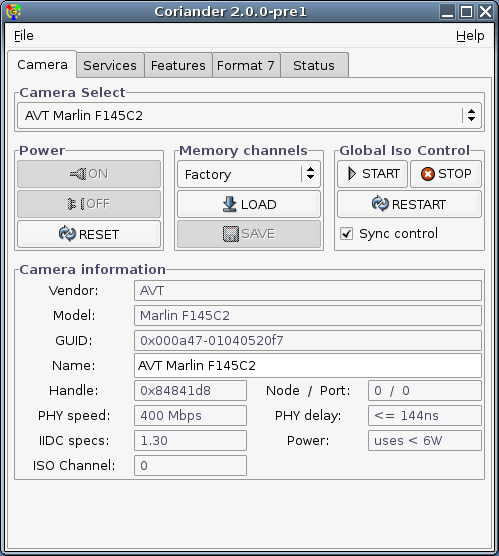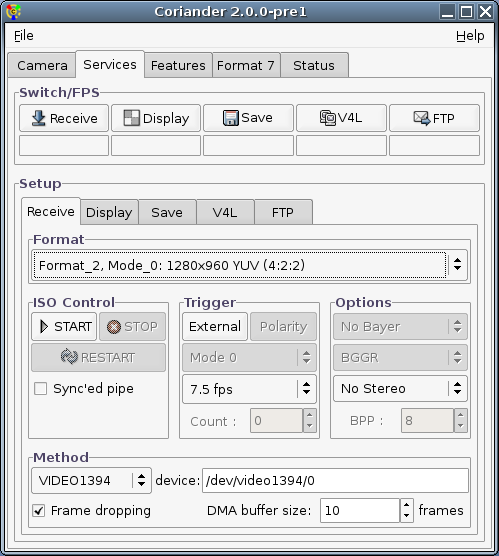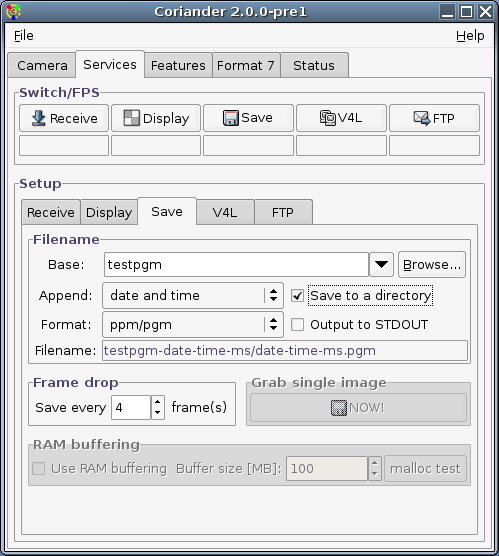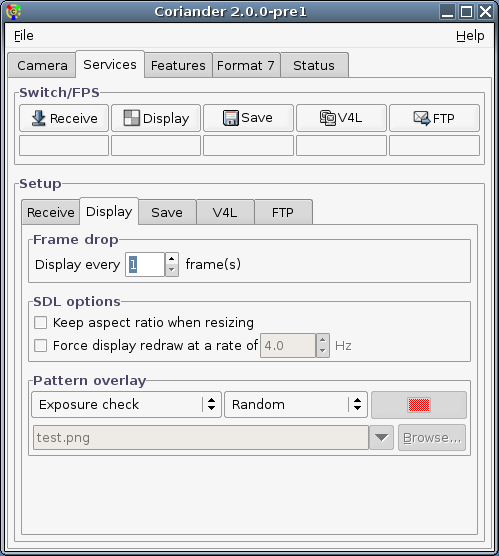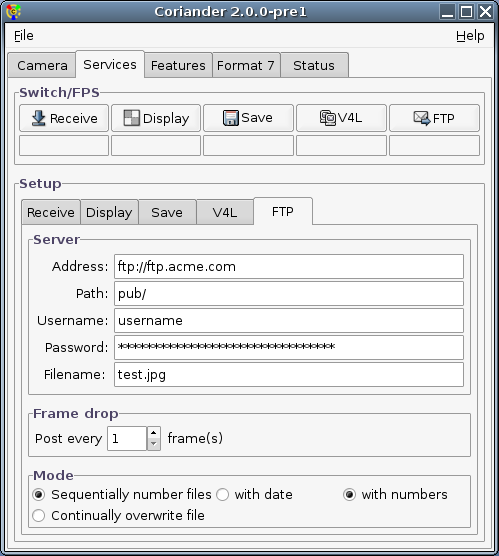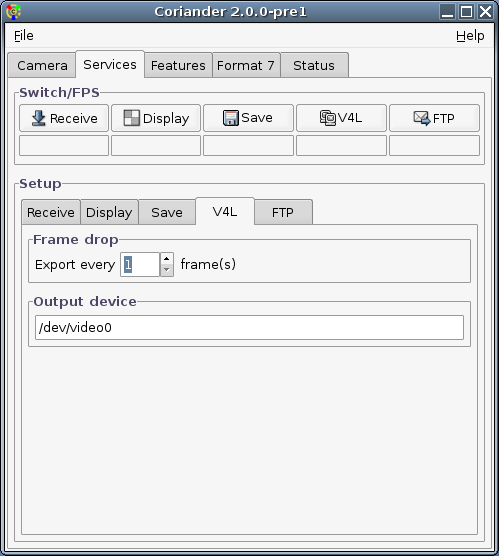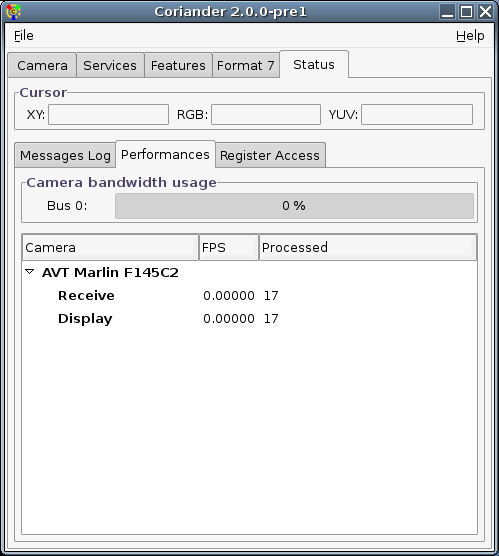Coriander : Screenshots | |
|
Some windows showing the controls available with coriander. This is from the most recent version converted to gnome-2 and libdc-2.0.
The main window containing camera selection, camera naming functions, basic hardware information and system controls (memory and power). Note the synch'ed image transmission command which should synch image flows with 125us accuracy.
Format_7 control to choose the Region Of Interest (ROI, aka AOI) size and position. The bytes per packet is usefull to limit framerate (multi camera operation). Informations about the image size are included too.
The receive tab is where you can control image reception (start/stop, trigger, 1394 system options,...) as well as things like Bayer pattern and stereo decoding.
The save service tab contains saving options: file format (stills, video,...) with useful goodies. The RAM buffering allows you to save a bunch of frame in your RAM instead of the HDD, which is cool when you have a fast camera and want to avoid frame dropping.
Display is... where display parameters are set. An overlay function let you supperpose several patterns and also check the exposure: highlighting of the highlights (!) and dark regions.
Coriander also has the option of sending images to a remote FTP server.
Another cool feature: pipe the image flow to a V4L program like Gnomemeeting, EffecTV,...
The status tab gives access to an error log, camera bandwidth usage, services performance report and direct register access (work in progress).
Last but not least, features are controlled in the Feature tab. Brightness, auto exposure, white balance, shutter,... are all accessible here. Note that the features shown by coriander depend on what is supported by your camera. "Absolute settings" (in seconds, dB,...) are supported too. | |
| © 2024 Damien Douxchamps. All rights reserved. | |


